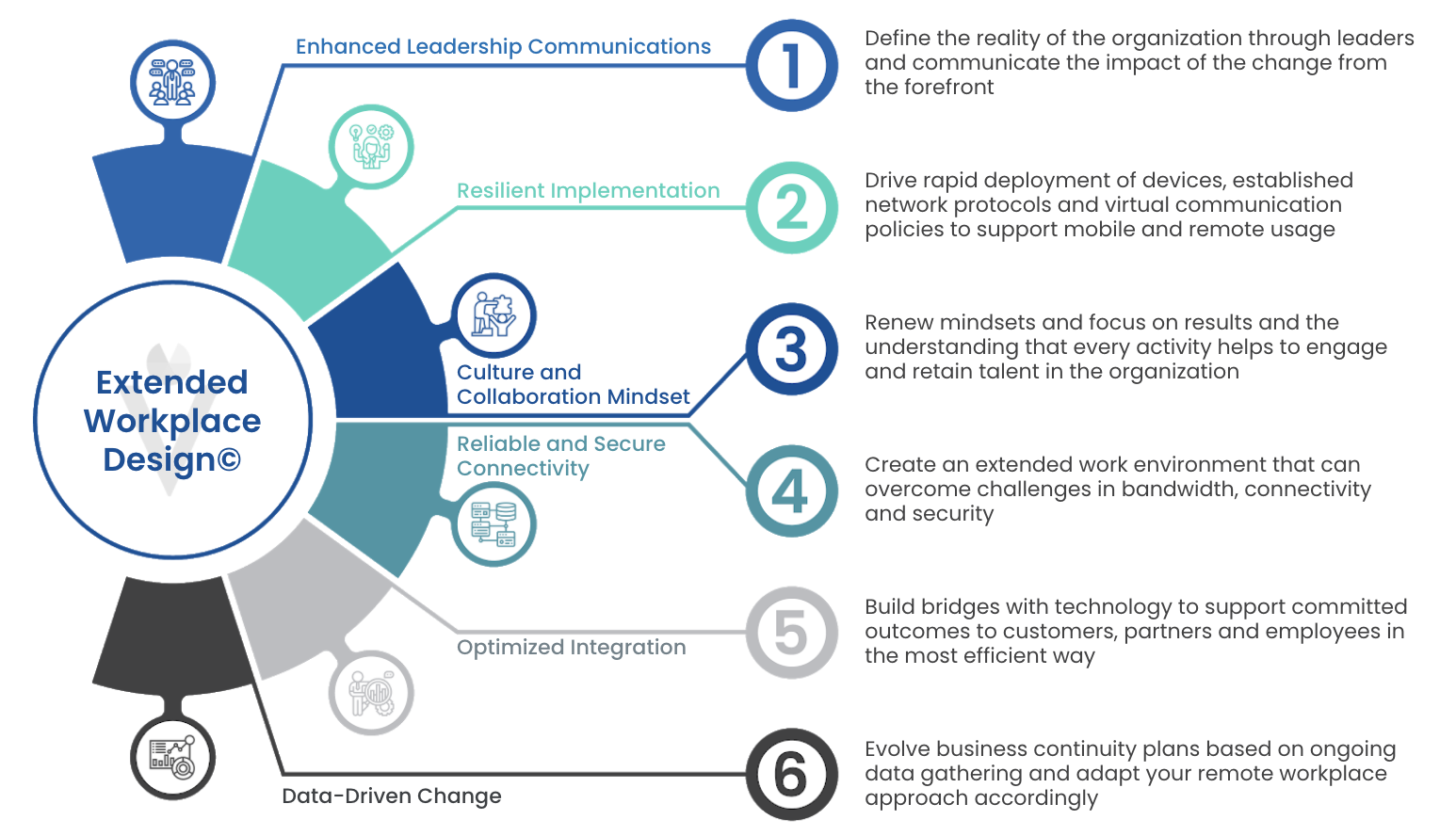Ways to Navigate Change Through an Extended Workplace Design
Published on: April 23, 2020
Leading in crisis requires agility in our response. As entrepreneur and Shark Tank investor Mark Cuban said, "How they respond is going to define their brand for decades. If you rushed in and somebody got sick, you were that company. If you didn’t take care of your employees or stakeholders and put them first, you were that company."
As concerns on COVID-19 continue to grow, the extended workplace is fast becoming the new normal. Every organization is deploying their business continuity plan or even revamping the existing one to rush and serve customers, support their employees and deliver a swift response. All these activities are being done in an extended environment and not in the comfort of a typical office, in platforms and devices that go beyond company-issued software and laptops. How should companies stay on top of employee communications, maintain strong collaboration and continue to achieve business results?
"Don't use this crisis as an excuse for lack of collaboration. Uncover opportunities for growth, individually and collectively. And instead, let this crisis define your brand and reinvent your culture for years to come." - Anj Vera, TalentView CEO
Over the course of the crisis and speaking with business leaders, technology partners and team members, TalentView has crafted a framework for an Extended Workplace Design. This enables leaders and decision makers to to evaluate six critical areas that influence their new ways of working and make the necessary enhancements to refine what it means to work remotely and effectively.

Deliver Results with an Extended Workplace Design
Enhanced Leadership Communication
- Let leaders define the reality of your organization (What they need to know, What is being monitored by the company, What will most likely change, etc.)
- Deploy (or develop) your crisis communication plan
- Mobilize your leaders to disseminate critical information on the crisis to teams and subteams
Resilient Implementation
- Take an audit of all your technology platforms
- Assess your capability to continue business operations using these platforms knowing it will run on personal devices
- Reinforce policies that comply with your data management standards and encourage proper use of tools and technologies to serve customers
Culture and Collaboration Mindset
- Point your team to the right sources of information (e.g. World Health Organization, News websites, Hospital websites, etc.)
- Rethink how your current tools can be improved to fill the gap in communication (Do new tools need to be put in place?)
- Engage employees the way you would in your office (e.g. celebrate birthdays, acknowledge milestones and achievements, run a Tiktok challenge, company bingo, etc.)
Reliable and Secure Connectivity
- Check on each team member’s level of access and communicate the importance of connectivity during the crisis
- Conduct a QA of the flow of information top-down and bottom-up (Is the information compromised? Are goals being accomplished on time?)
- Focus on home networking tools that support participation to internal meetings and external events like trainings, webinars and new ways of working with each other
Optimized Integration
- Revisit your business objectives and make sure all processes are positioned to support these goals
- Spot broken workflows or overlapping ones (e.g. Filing of multiple forms that have the same purpose) and bridge these with new processes and technologies if/when possible
- Implement new ways of working across the organization, whether it is repurposing your existing technologies or acquiring new ones
Data-Driven Change
- Speak with your leaders on the effectiveness of the business continuity plan (What other things need to be addressed?)
- Assess the speed at which communication reaches your entire organization
- Make the necessary adjustments and realign your entire organization
How companies respond is going to define their brand for decades. If you rushed in and somebody got sick, you were that company. If you didn’t take care of your employees or stakeholders and put them first, you were that company.
- Mark Cuban, American billionaire, entrepreneur and investor
According to Salesforce, 86% of employees and executives cite lack of collaboration or ineffective communication for workplace failures. Don't use this crisis as an excuse for lack of collaboration. Uncover opportunities for growth, individually and collectively. And instead, let this crisis define your brand and reinvent your culture for years to come.
STAY UPDATED
Sign up to our newsletter to get regular updates on everything talent, leadership and HR tech directly in your inbox.
By submitting this form, you are agreeing to receive emails from TalentView Inc.


